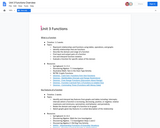
Unit 3 Functions Overview
- Subject:
- Algebra
- Mathematics
- Material Type:
- Unit of Study
- Author:
- MPS Alegrba Work Group
- Date Added:
- 05/20/2019

Unit 3 Functions Overview
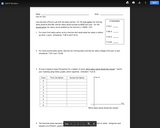
Unit 4 Assessment
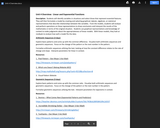
Unit 4 Overview

This document is the Unit 5 Overview for Quadratics and Polynomials to be used as an instructional guide.
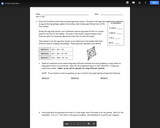
Common Assessment for Chunk 1 of Unit 5: Quadratic Functions
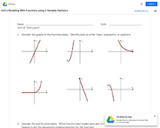
Assessment - Unit 6

Unit 6 Assessment
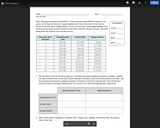
Assessment Unit 6 Test
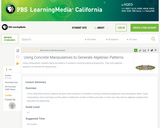
Using manipulatives, students figure out patterns in problems involving seating arrangements. They write algebraic equations to describe the relationships.
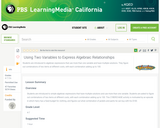
Students are introduced to algebraic expressions that use more than one variable and have multiple solutions. They figure out combinations of two items at different costs, with each combination adding up to 100.
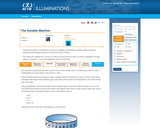
This lesson from Illuminations provides an introduction to the use of variables, and develops students' algebraic thinking. Students create variable machines to discover the value of words by assigning each letter of the alphabet a unique number value. Learning objectives, a materials list, a pdf file of the student worksheet, an instructional plan, questions for the students, assessment options, extensions, and teacher reflections are provided.
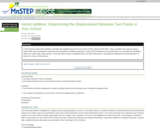
This activity is a indoor lab where students gather data within their school to develop the concept of displacement in two dimensional motion.

Students work in groups to find a "treasure" using a treasure map with directions written in vector format.
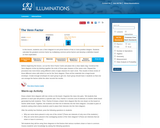
This lesson plan provides the teacher with an activity to help students calculate the Greatest Common Factor of two or more positive integers and develop a definition based on their exploration. Students find the prime factorization of two positive numbers using factor trees and Venn diagrams to sort the prime factors. The plan includes learning objectives, materials needed, questions to ask students, assessment options, extensions, teacher self-reflection questions, and further references.

Prepared with pre-algebra or algebra 1 classes in mind, this module leads students through the process of graphing data and finding a line of best fit while exploring the characteristics of linear equations in algebraic and graphic formats. Then, these topics are connected to real-world experiences in which people use linear functions. During the module, students use these scientific concepts to solve the following hypothetical challenge: You are a new researcher in a lab, and your boss has just given you your first task to analyze a set of data. It being your first assignment, you ask an undergraduate student working in your lab to help you figure it out. She responds that you must determine what the data represents and then find an equation that models the data. You believe that you will be able to determine what the data represents on your own, but you ask for further help modeling the data. In response, she says she is not completely sure how to do it, but gives a list of equations that may fit the data. This module is built around the legacy cycle, a format that incorporates educational research feindings on how people best learn.
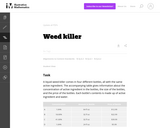
The principal purpose of the task is to explore a real-world application problem with algebra, working with units and maintaining reasonable levels of accuracy throughout.
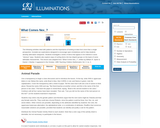
The activities in this Illumination lesson plan deal with patterns and the importance of looking at an object/item from more than a single perspective and reaffirms to learners that numerous reasonable solutions are possible. Students investigate a series of items (a list of class names and a parade of animals) that appear to be ordered in some "obvious" ways and also explore ways of sorting items ( a deck of cards and numbered horses) into two disjoint groups on the basis of some definable characteristic. Activity sheets are included in pdf format.

Students act as food science engineers as they explore and apply their understanding of cooling rate and specific heat capacity by completing two separate, but interconnected, tasks. In Part 1, student groups conduct an experiment to explore the cooling rate of a cup of hot chocolate. They collect and graph data to create a mathematical model that represents the cooling rate, and use an exponential decay regression to determine how long a person should wait to drink the cup of hot chocolate at an optimal temperature. In Part 2, students investigate the specific heat capacity of the hot chocolate. They determine how much energy is needed to heat the hot chocolate to an optimal temperature after it has cooled to room temperature. Two activity-guiding worksheets are included.
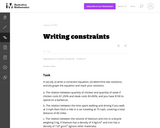
The purpose of this task is to give students practice writing a constraint equation for a given context. Instruction accompanying this task should introduce the notion of a constraint equation as an equation governing the possible values of the variables in question.
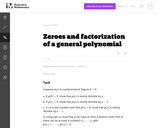
This task looks at zeroes and factorization of a general polynomial. It is related to a very deep theorem in mathematics, the Fundamental Theorem of Algebra, which says that a polynomial of degree d always has exactly d roots, provided complex numbers are allowed as roots and provided roots are counted with the proper "multiplicity.''